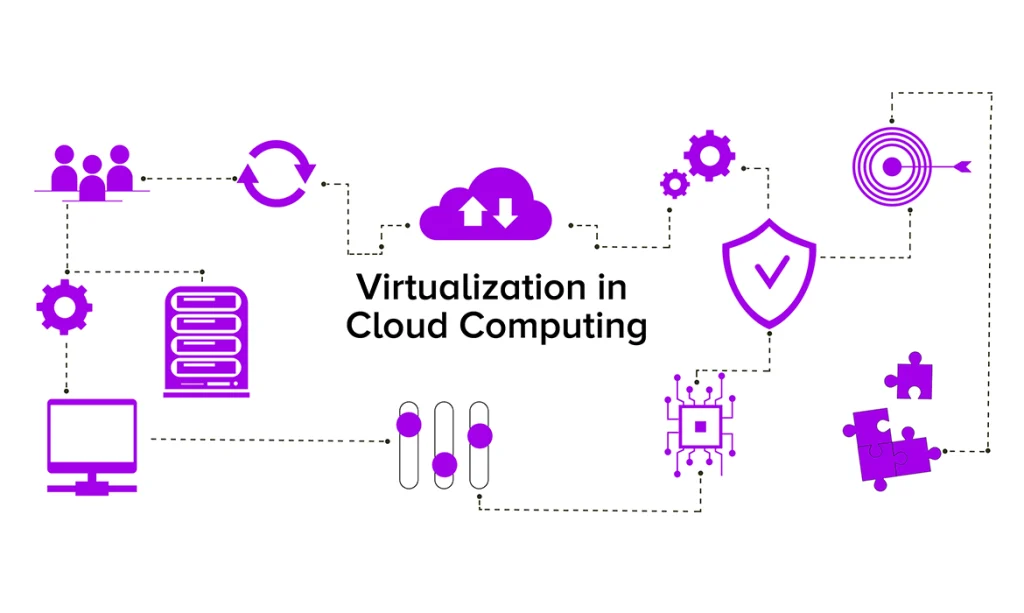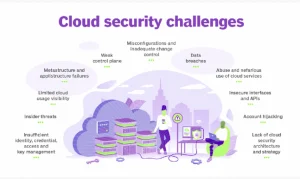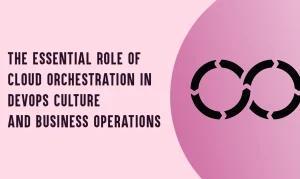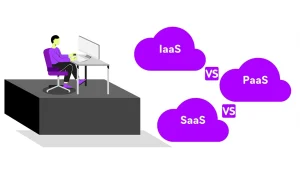Virtualization, in essence, refers to the representation of cloud computing servers in a virtual form. Simplifying the concept, there exists virtual software that mirrors physical hardware resources, streamlining the execution of cloud operations. The emulation of operating systems, network resources, and servers in a virtual space proves immensely advantageous for numerous businesses.
Furthermore, cloud computing stands out as a highly effective approach for hosting a multitude of web-based applications. This is why hardware virtualization, operating system virtualization, server virtualization, and storage virtualization have gained widespread attention.
You may wonder why virtualization in cloud computing is generating such excitement. What types of virtualization exist in cloud computing, and what benefits does virtualization offer in the realm of cloud computing? This comprehensive guide aims to address these queries and provide a thorough understanding of virtualization in cloud computing.
Table of Contents
Virtualization as a Concept of Cloud Computing

Virtualization, a cornerstone of cloud computing, revolutionizes IT infrastructure by creating virtual instances of computing resources like servers, networks, and storage. In this paradigm, specialized software simulates physical hardware, enabling multiple virtual instances to operate on a single machine. This abstraction of hardware enhances flexibility, scalability, and operational efficiency in cloud environments.
Virtualization’s key benefit lies in its capacity to abstract underlying hardware, fostering improved resource utilization and rapid application deployment. Various virtualization types cater to specific aspects: hardware virtualization uses hypervisors for multiple virtual machines on a single server, operating system virtualization isolates user spaces, server virtualization optimizes server resources, and storage virtualization centralizes storage systems.
The excitement surrounding virtualization in cloud computing arises from its transformative impact on resource management, offering businesses greater agility and responsiveness in deploying diverse applications in the cloud. Understanding virtualization is crucial as businesses increasingly leverage cloud computing for hosting their applications.
Characteristics of Virtualization

Virtualization, a cornerstone of modern computing, boasts several key characteristics that contribute to its widespread adoption and transformative impact on IT infrastructure:
- Abstraction: Virtualization abstracts the underlying physical hardware, creating a layer of separation between the virtualized resources and the actual hardware. This abstraction allows for greater flexibility in managing and allocating computing resources.
- Isolation: Virtualization provides a means to isolate different virtual instances from each other. This isolation ensures that the performance or issues in one virtual environment do not affect others, enhancing overall system reliability and security.
- Resource Pooling: Virtualization enables the pooling of physical resources such as computing power, storage, and networking. These pooled resources can be dynamically allocated to meet the changing demands of applications and workloads.
- Dynamic Allocation: Virtualization allows for the dynamic allocation of resources based on demand. This flexibility ensures efficient use of resources, optimizing performance and minimizing waste.
- Snapshot and Cloning: Virtualization facilitates the creation of snapshots and clones of virtual machines. Snapshots capture the state of a virtual machine at a specific point in time, aiding in backup and recovery. Cloning allows for the rapid replication of virtual instances, streamlining deployment processes.
- Migration and Mobility: Virtualization enables the seamless migration of virtual machines across different physical servers or data centers. This mobility feature supports load balancing, resource optimization, and enhances system resilience.
- Cost Efficiency: By consolidating multiple virtual instances onto a single physical server, virtualization maximizes resource utilization, leading to cost savings in terms of hardware, power consumption, and maintenance.
- Elasticity and Scalability: Virtualization provides a scalable and elastic environment, allowing organizations to easily scale their computing resources up or down based on demand. This adaptability is particularly advantageous in cloud computing environments.
- Compatibility and Portability: Virtualization promotes compatibility by decoupling applications from the underlying hardware. Virtual machines can run on different platforms, enhancing portability and facilitating seamless migration between environments.
- Centralized Management: Virtualization platforms often offer centralized management tools, simplifying the administration and monitoring of virtualized environments. This centralized control enhances overall system governance and reduces management complexity.
How Cloud Virtualization Works?
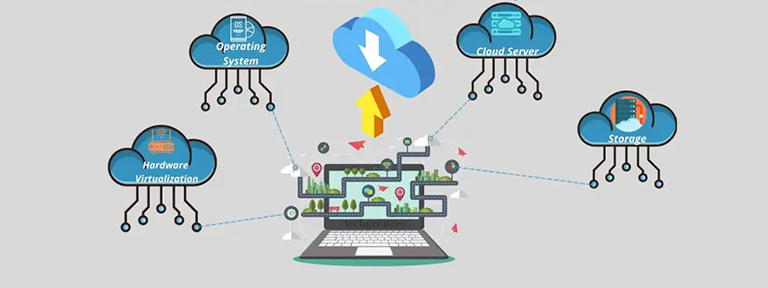
Cloud virtualization operates through the deployment of hypervisors on physical servers, serving as the linchpin for creating a dynamic and efficient cloud infrastructure. These hypervisors, or Virtual Machine Monitors (VMMs), enable the creation of virtual machines (VMs) by abstracting the underlying physical hardware. Users initiate the process by defining resource parameters such as CPU, memory, and storage, allowing for the efficient allocation of resources and the creation of virtual instances.
The key to cloud virtualization lies in resource abstraction, which enables multiple VMs to coexist independently on a single physical server. This abstraction fosters isolation, ensuring that the activities of one virtual instance do not impact others, enhancing both security and reliability.
Beyond computing resources, cloud virtualization extends to networking and storage, enabling the creation of virtual networks and the abstraction of storage resources.
The pooled resources from multiple servers provide flexibility through dynamic allocation, allowing for scalability and elasticity in response to varying workloads. Load balancing mechanisms further optimize performance, while automation tools streamline provisioning and management tasks.
Ultimately, cloud virtualization forms the bedrock of cloud computing, offering organizations the agility and efficiency needed to navigate the demands of modern IT infrastructure.
How is server virtualization different from containerization?

Server virtualization and containerization are distinct methods for deploying applications. In server virtualization, applications run in a virtual environment, akin to building a dedicated road. This involves encapsulating the entire operating system and application stack into a virtual machine. In contrast, containerization is more agile. With containers, developers package application code, libraries, and dependencies into a portable unit—a container. This allows applications to run on any environment without changes, similar to flying a helicopter anywhere.
Unlike server virtualization, which virtualizes the entire operating system, containerization isolates applications at the process level, offering efficiency and rapid deployment. In essence, server virtualization builds dedicated roads, while containerization creates versatile helicopters. Each approach caters to specific needs in application deployment within the evolving landscape of IT.
Key Cloud Security Benefits with Virtualization

Unlock the advantages of cloud computing within your business ecosystem by harnessing key security benefits with virtualization:
- Flexibility:
Enjoy a dynamic sharing system where users can collaborate without the need to exchange physical resources. Data becomes accessible across various systems, fostering seamless collaboration.
- Data Protection:
Embrace the security of data virtualization in cloud computing, eliminating the risks of data loss or malicious activities. The information is securely stored within the virtual system, enhancing overall data protection.
- Security Against Attacks:
Through methodical isolation of applications and virtual machines, the risk of multiple attacks in case of exposure is significantly reduced. This strategic approach enhances the overall security posture.
- Cost Effectiveness:
Experience cost savings as virtualization diminishes the requirement for extensive hardware in data centers. This not only streamlines operations but also improves the physical security infrastructure within organizations.
- Better Access Control:
Enhance security through advanced access control for system and network administrators, boosting both security and system efficiency. Cloud computing with virtualization provides a robust security framework, combining flexibility, data protection, resilience against attacks, cost efficiency, and refined access control.
Moving Forward
Organizations seeking to fortify their cloud security can leverage virtualization. To establish a resilient security stance, it is crucial to implement multi-layered protection and adhere to system protocols. Organizations must formulate strategies and gain a comprehensive understanding of addressing security concerns within virtual infrastructure and its components. Making virtualization a top priority—rather than an afterthought—is imperative for organizations aiming to bolster their cloud security.
Also Read :- How to Understand the Relationship Between Cloud Computing and Data Centers


